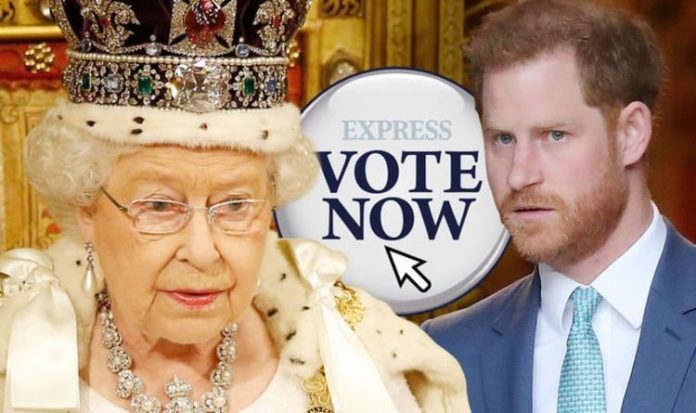Prince Harry and Meghan Markle officially stepped down as senior royals almost one year ago, at the end of March 2020. And, given the deals they have struck with Netflix and Spotify and decision to buy a home in California, it looks unlikely they will return into the royal fold as full-time working royals anytime soon.
This has sparked the concern of royal commentator Robert Jobson, who believes only working royals should be included in the top positions of the line of succession to protect the Crown.
He told BBC Breakfast: “I think it’s time the Royal Family woke up to the situation that [Meghan and Harry are] not coming back.
“They need to be taken out of the line of succession.
“I also think that you’ve got to remember that, in this Covid pandemic, that we’re only a couple of breaths away from a constitutional crisis.
“We have a very old Queen, both the Prince of Wales and Prince William have suffered with COVID.
“What would we have? Prince Harry as regent to Prince George?
“There are bigger issues here than personalities.
“What is the position in terms of the constitutional monarchy?
READ MORE: Prince Harry to become ‘closer’ to Royal Family when Charles is King
“It’s not about personalities, it’s a much more serious situation than that.”
Sharing his view on the matter on Twitter, Mr Jobson added he believed Princess Anne, one of the hardest-working members of the Royal Family, should be bumped up the line, possibly by retrospectively applying the Succession to the Crown Act 2013, which replaced male-preference primogeniture with absolute primogeniture.
However, this scenario was deemed unworkable by academic Adrian Hilton, who tweeted: “The Princess Royal is utterly lovely and quite exemplary in her commitment to duty.
“But the line of succession isn’t determined by personal industry; nor is the frequency of public engagements the sole measure of that industry.”
DON’T MISS
Prince Harry, who was born third-in-line to the throne, is currently sixth, behind Prince Charles, Prince William and his three children.
Archie, Meghan and Harry’s firstborn, is seventh-in-line, and the Sussexes’ second son is set to become eight-in-line to the throne upon birth.
Much like Harry and Meghan, their children will unlikely become working royals in the future.
The upcoming Baby Sussex will be followed in the succession line by Prince Andrew, who in November 2019 announced he was temporary stepping back from public duties in the midst of his car crash interview with Emily Maitlis and the Epstein scandal.
More than 15 months later, the Duke of York has yet to attend a public event with other royals.
Removing a member of the Royal Family from the line of succession isn’t a decision the Queen alone or the royals themselves can take but requires Parliament to step in.
Royal historian Marlene Koenig told Royal Central last year: “Succession to the throne is based on legislation including the Succession to the Crown Act, which includes the Act of Settlement.
“It would take an act of Parliament to remove a person from the line of succession.”
The most recent constitutional crisis sparked by a member of the Royal Family dates back to 1936, when King Edward VIII gave up the throne to marry his lover Wallis Simpson.
While the decision was personal, Parliament had to step in and sanction his move with a vote to change the line of succession and put the then-Duke of York, the Queen’s father, on the throne.
Edward VIII signed his declaration of abdication on December 10 1936 and both Houses in Parliament passed the His Majesty’s Declaration of Abdication Act on the following day without any amendments.







